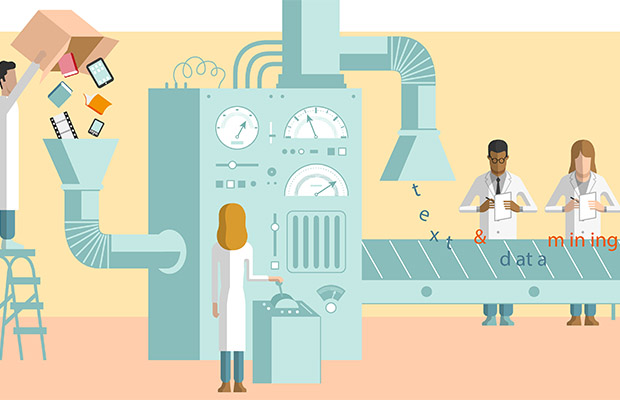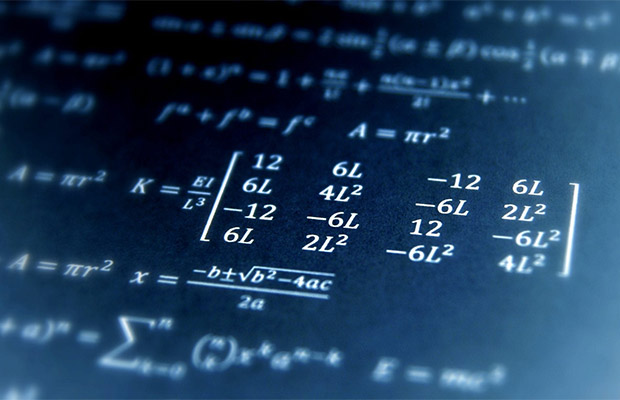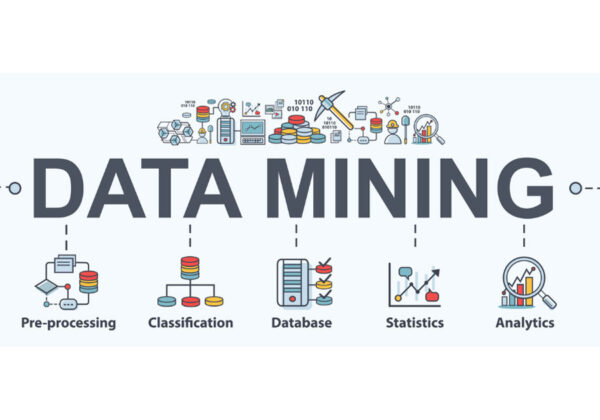For many different applications, a sizable data set is used. Data mining is the process of obtaining important information from vast amounts of data. Regression is one of the key techniques used in data mining. So what Is regression in data mining?
A data mining method known as regression is used to forecast the numerical values in a given data set. Regression may be used, for instance, to forecast other variables such as the price of the good or service. It is also used in a variety of industries for trend analysis, financial forecasting, and business and marketing behavior.
We will learn about the different types of regression in this tutorial along with some examples.
Table of Contents
What Is Regression?
A supervised machine learning method known as regression is used to forecast any attribute with a continuous value. Any business organization can analyze the relationships between the target variable and the predictor variable with the aid of regression. It is a very important tool for data analysis that can be applied to time series modeling and financial forecasting.
Fitting a straight line or a curve to a large number of data points is the process used in the regression. The distance between the data points and the treatment turns out to be the smallest as a result of how things work out.
Regressions of the linear and logistic variety are the most widely used. In addition, depending on how well they work with a specific data set, many other types of regression can be used.
All dependent data sets can be predicted using regression, and the trend is available for a limited time. Although there are some limitations and presumptions, such as the independence of the variables and their inherent normal distributions, regression offers a useful method for predicting variables. Assume, for instance, that two variables, A and B, are taken into account and that their joint distribution is a bivariate distribution by nature. Therefore, although these two variables may be independent, they are also correlated. It is necessary to derive and use the marginal distributions of A and B. To make sure the regression is applicable, the data must be carefully examined and tested before applying regression analysis. In such circumstances, non-parametric tests are available.
Different Types Of Regression Techniques
Regression analysis using linear regression is the most basic and traditional method for determining the relationship between two variables. The mathematical equation for a straight line (y = mx+b) is used in this method. In layman’s terms, this merely means that, given a graph with an X and Y axis, the relationship between X and Y is a straight line with few outliers. Assuming, for instance, that food production would rise at the same rate as population growth would necessitate a strong, linear correlation between the two numbers. Think of a graph where the Y-axis represents population growth and the X-axis represents food production to help you visualize this. The relationship between them would be a straight line because as the Y value increased, the X value would rise at the same rate.
There may be a correlation between income, education, and where a person chooses to live, for instance, as predicted by sophisticated techniques like multiple regression. The prediction becomes significantly more complex as more variables are added. There are several different kinds of multiple regression techniques, each with a specific use case, including standard, hierarchical, setwise, and stepwise.
At this point, it’s important to understand what we are trying to predict (the dependent or predicted variable) and the data we are using to make the prediction (the independent or predictor variables). In our example, we want to predict the location where one chooses to live (the predicted variable) given income and education (both predictor variables).
- Standard multiple regression considers all predictor variables at the same time. For instance, 1) what is the relationship between income and education (predictors) and neighborhood preference (predicted); and 2) how much does each individual predictor contribute to that relationship?
- Stepwise multiple regression answers an entirely different question. A stepwise model evaluates the order of importance of the predictor variables and then chooses a pertinent subset, which is how a stepwise regression algorithm will determine which predictors are best used to predict the choice of neighborhood. The regression equation is constructed using “steps” in this kind of regression problem. Given this kind of regression, it’s possible that not all predictors will even show up in the final regression equation.
- Hierarchical regression, like stepwise, is a sequential process, but the predictor variables are entered into the model in a pre-specified order defined in advance, i.e. the algorithm does not contain a built-in set of equations for determining the order in which to enter the predictors. When a person creates a regression equation, they most frequently do so when they are an expert in the subject.
- Setwise regression is also similar to stepwise but analyzes sets of variables rather than individual variables.

Various Ways That Regression Is Used In Data Mining
- Modeling of Drug Response
- Business and Marketing Planning
- Forecasting or Financial Forecasting
- Analyzing Patterns or trends
- Environmental Simulations
- Pharmaceutical Performance ver Time
- Statistical Data Calibration
- Relationship between Physiochemicals
- Analyzing Satellite Images
- Estimation of Crop Production
How Should A Regression Model Be Measured?
1. Mean Absolute Error (MAE)
The absolute difference between Actual and Anticipated Values is calculated using the A rather simple statistic the MAE measure.
Think about the following example to gain a better understanding: you have input data and output data, and you want to apply The best-fit line created using linear regression. You now need to find your model’s MAE, which is essentially a mistake that the model made and is referred to as an error. You must first determine the mean absolute of the entire dataset before you can calculate the absolute error, which is the difference between the actual and anticipated values.
Therefore, MAE can be calculated by adding up all the errors and dividing them by the total number of observations. The MAE should be as low as possible because this is a loss.
- The output variable’s unit and the MAE value you receive are the same.
- It withstands outliers the best.
- You must use differentiable optimizers like gradient descent because the MAE graph is not differentiable.
- The MSE Metric was developed to address MAE’s flaw.
2. R Squared (R2)
The R2 Score is a metric that evaluates the effectiveness of your model, not the number of wells it performed. As you can see, whereas the R2 Score is context-independent, MAE and MSE depend on the context. R squared enables comparisons between models that none of the other metrics can, allowing you to compare a model to a reference model. A threshold, which is defined as 0.5, is a similar concept used in classification problems. Measured by the R2 Score, a regression line’s superiority over a mean line is determined. As a result, the R2 Score is also known as the Coefficient of Determination or Fit Quality
If the R2 Score is 0 and the regression line is divided by the mean line, 1-1 is equal to 0. Because of this, the fact that both lines overlap shows that the model is underperforming and unable to utilize the output column.
The second situation happens when the regression line is flawless and has an R2 score of 1, which means that the division term is zero. In reality, it is not conceivable. Therefore, it follows that the R2 score approaches one as the Regression line gets closer to being perfect. The performance of the model also gets better.
The normal condition is when the R2 value is between 0 and 1, such as 0.8, indicating that your model can explain 80% of the variance in data.
3. Mean Squared Error (MSE)
MSE is a popular and simple statistic that takes into account a small change in mean absolute error. Finding the squared difference between the actual and anticipated value is defined as The difference between actual and predicted values’ squared values are represented by the term “mean squared error,” or MSE. To avoid the cancellation of negatives, squaring of values was done.
- The graph of MSE is easily applicable as a loss function because it is differentiable.
- The output of the MSE computation is a squared unit. The output you get after computing MSE is in meters squared, for instance, if the output variable is in meters (m).
- When there are outliers in the dataset, they suffer the greatest penalties, which increases the estimated MSE. In other words, it lacks robustness against outliers that MAE had.
4. Root Mean Squared Error (RMSE)
The acronym RMSE indicates that it is a simple square root of mean squared error.
- Because the desired output variable and the output value are in the same unit, interpreting the loss is straightforward.
- It is less robust to outliers than MAE, for example.
- To perform RMSE, you must use the NumPy square root function over MSE.
print(“RMSE”,np.sqrt(mean_squared_error(y_test,y_pred)))
When working with deep learning techniques, RMSE is frequently used as an evaluation metric.
5. Root Mean Squared Log Error (RMSLE)
The magnitude of error is slowed by taking the log of the RMSE Metric is extremely useful when building a model without calling the inputs. The result in that situation will be quite unpredictable. You use the calculated RMSE Error’s log, which you refer to as RMSLE, to control the RMSE problem. To perform RMSLE instead of RMSE, you must use the NumPy log function.
The majority of datasets used in machine learning competitions use this straightforward statistic.
6. Adjusted R Squared
The R2 Score’s drawback is that it begins to rise or stay level as new characteristics are added to the data, but it never falls because it implies that the variance of the data rises as more data are added. The problem is that R2 sometimes starts to increase, which is incorrect when you add a trivial feature to the dataset. A solution to the problem was thus developed: Adjusted R Squared.
Now, the denominator gets smaller but n-1 stays constant as K increases as more features are added. The total answer will increase as the R2 Score either stays the same or slightly increases. This will reduce the final score when it is subtracted from one. In light of this, this is what happens when you add an unnecessary feature to the dataset.
When a relevant feature is added, the R2 score increases, 1-R2 decreases, and the denominator decrease as well, lowering the total term. Conversely, when you deduct one, the score increases.
As a result, this parameter becomes one of the most important factors to take into account when assessing the model.
Difference Between Regression And Classification In Data Mining
There are many similarities between classification and regression. The two main prediction problems used in data mining are classification and regression. If you learn a function that connects inputs and outputs from a training set, you should be able to predict outputs given inputs on new data. The only distinction is that in regression, the outputs are not discrete, whereas they are in classification. But there are ambiguities between the terms, as seen in “logistic regression,” which can be used as either a classification or a regression technique. The user finds it increasingly challenging to understand when to use regression and classification.
Regression:
- Regression refers to a type of supervised machine learning technique that is used to predict any continuous-valued attribute
- Regression predicts ordered data, which has an ordered nature.
- Linear and non-linear regression are additional categories into which the regression can be divided.
- The root means the square error is essentially used in the calculations during the regression process.
- Regressions include, but are not limited to, linear regression and regression trees.
Classification:
- Using predefined class labels to categorize instances according to their characteristics is referred to as classification.
- The predicted data in classification is ordinal in nature.
- There are two types of classification: binary classifier and multi-class classifier.
- Calculations in the classification process are generally made by gauging effectiveness.
- The decision tree is one type of classification.
We can typically compare the effects of different types of feature variables measured on various scales thanks to regression analysis. For instance, predicting land prices based on a location, a region, its surroundings, etc. These findings aid market researchers or data analysts in eliminating pointless features and assessing the best features for building effective models.
Read More: What Is Classification In Data Mining?




